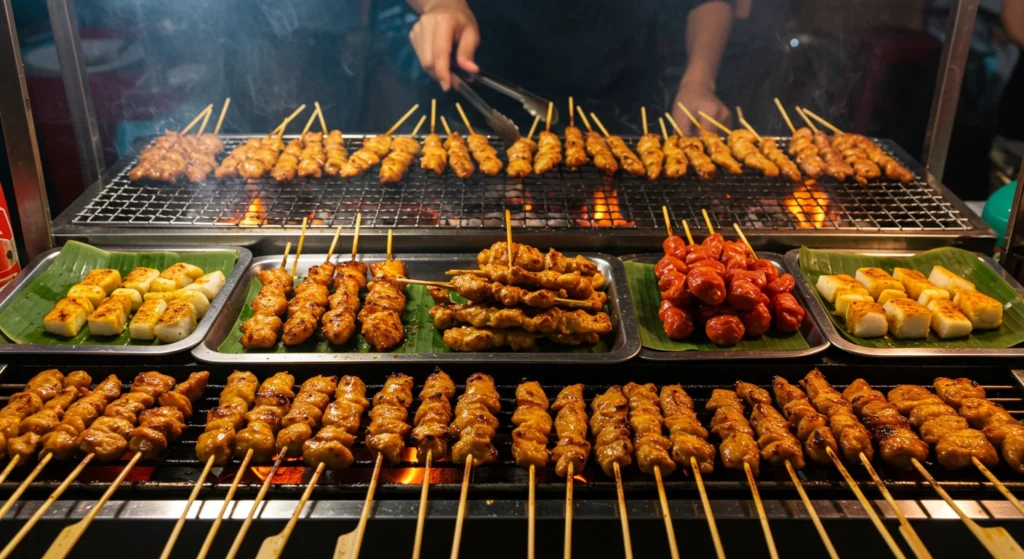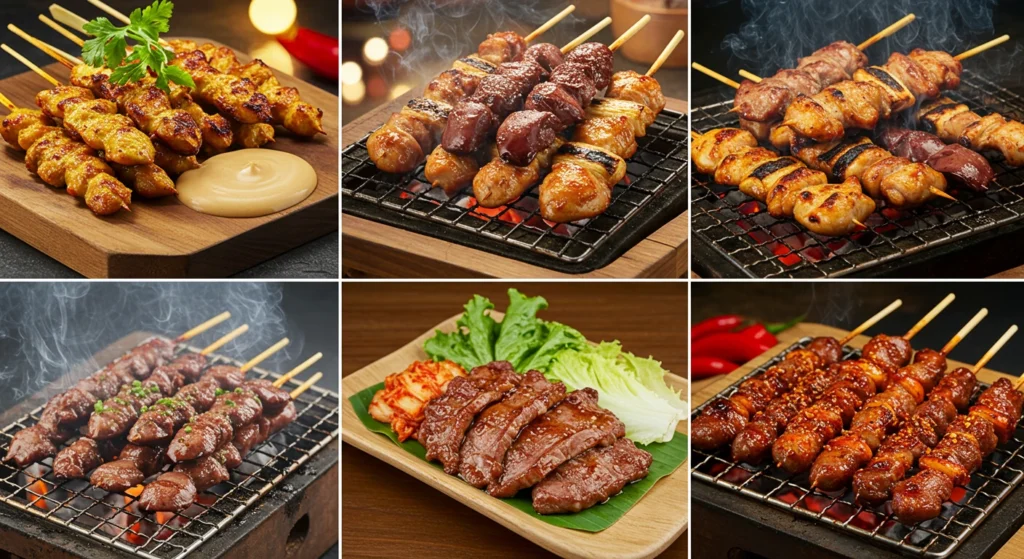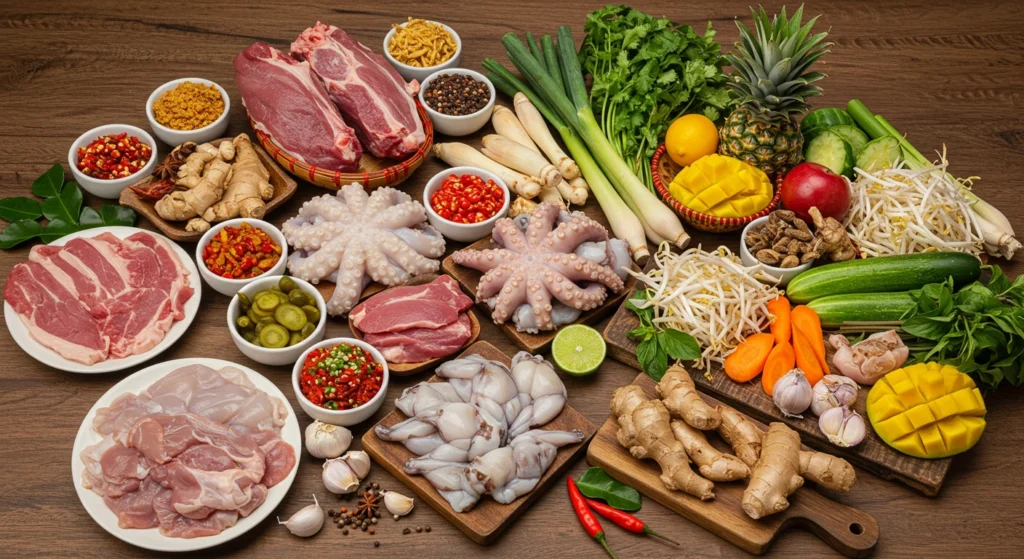Asia is home to some of the most exciting culinary experiences in the world, and its street food scene is no exception. Across the continent, bustling markets and busy sidewalks transform into open-air kitchens, offering a feast for the senses. From the smoky aroma of grilled skewers to the vibrant colors of fresh ingredients, street food represents a cornerstone of Asian culture, and among the most celebrated of these delights is the variety of Asian street meat.
What makes street meat so irresistible? It’s not just food—it’s an experience. The tantalizing sizzle of meat on a grill, the wafting aroma of exotic spices, and the sight of skilled vendors working with precision create a unique atmosphere that’s hard to resist. Whether you’re wandering through the night markets of Bangkok, the hawker centers of Singapore, or the street-side stalls in Seoul, Asian street meat offers a delicious blend of tradition, innovation, and authenticity that reflects the rich tapestry of cultures in the region.
For food lovers, Asian street meat is a must-try for its unparalleled diversity. From spicy satay skewers to smoky yakitori and perfectly marinated bulgogi, each dish tells its own story. The combination of flavors, cooking techniques, and locally sourced ingredients creates a harmony that delights the palate and leaves a lasting impression.
In this article, we’ll dive deep into why Asian street meat is considered a food lover’s paradise. We’ll uncover the secrets behind its allure, introduce you to iconic dishes from various countries, explore the ingredients and techniques that make it unique, and offer tips for enjoying this culinary treasure like a local. Prepare your appetite—you’re about to embark on a flavorful journey through Asia’s bustling streets and vibrant food markets.
The Unique Allure of Asian Street Meat

Asian street meat holds an irresistible charm. It captivates food lovers across the globe. It’s more than just food; it’s a cultural phenomenon that blends tradition, innovation, and a shared love of bold flavors. Here’s what makes it so unique:
The Vibrant Night Markets
One of the most iconic aspects of Asian street meat is its presence in vibrant night markets. These markets light up the streets with colorful displays and enticing aromas. Famous markets like Chatuchak Market in Bangkok and Shilin Night Market in Taiwan are perfect examples.
In Chatuchak, you’ll find an endless array of grilled skewers, marinated meats, and exotic dishes sizzling on open flames. The lively chatter of locals and tourists fills the air. The rich aroma of smoky barbecue creates an electrifying atmosphere. Meanwhile, Shilin offers an equally mesmerizing experience. The blend of traditional Taiwanese snacks and innovative twists on street food classics, such as skewered sausages and grilled seafood, is a must-try.
These night markets are more than just places to eat. They are cultural hubs where people gather to enjoy good food, great company, and the vibrant energy of the local community.
Affordable Culinary Adventures
One of the greatest joys of exploring Asian street meat is its affordability. Despite the high quality and bold flavors, street meat dishes are budget-friendly. This makes them accessible to everyone.
Vendors often use fresh, locally sourced ingredients. This keeps costs low while ensuring excellent taste. For just a few dollars, you can feast on flavorful skewers of grilled chicken, beef, or pork. These are often accompanied by dipping sauces that add an extra punch of flavor.
This affordability isn’t just appealing to locals. It’s also a major draw for tourists. For travelers on a budget, sampling street meat is an excellent way to experience authentic Asian cuisine without breaking the bank.
A Fusion of Cultures on a Skewer
Asian street meat is a delicious reflection of the region’s cultural diversity. Every skewer tells a story. It combines local traditions with global influences to create a unique culinary experience.
Take satay skewers, for instance, a staple in Southeast Asia. Originating from Indonesia, this dish features marinated meat grilled over an open flame. It’s served with a rich, nutty peanut sauce. In contrast, Japan’s yakitori showcases the art of simplicity. These perfectly seasoned chicken skewers are grilled to perfection and paired with soy-based sauces.
This fusion of cultures extends beyond individual dishes. It affects the techniques and ingredients used. As a result, Asian street meat offers a wide range of flavors. Whether you prefer sweet, savory, spicy, or tangy, there’s something for everyone.
Iconic Asian Street Meat Dishes to Savor

Asian street meat offers a journey through diverse cultures. From Southeast Asia’s smoky satay to China’s fiery chuan, each dish has its unique flavors. Here are some iconic dishes to savor:
Satay Skewers (Southeast Asia)
Satay skewers are popular in Southeast Asia. They have roots in Indonesia but can also be found in Malaysia and Thailand. The skewers feature marinated chicken, beef, or lamb grilled over an open flame.
Key Ingredients: The marinade includes coconut milk, lemongrass, turmeric, and spices like coriander and cumin. The grilled meat is served with a rich peanut sauce.
Cooking Method: The meat is skewered and grilled until slightly charred. Some versions come with pickled vegetables to enhance the flavor.
Yakitori (Japan)
Yakitori refers to grilled chicken skewers, a staple in Japan. These skewers are served at street stalls and izakayas (Japanese pubs). The variety of chicken parts used makes each bite unique.
Variety: Yakitori includes chicken thighs, liver, skin, and even gizzard. The skin is particularly popular for its crispy texture.
Cooking Method: The meat is seasoned with salt or a soy-based sauce called tare. It’s grilled over hot coals to achieve a slightly charred exterior while keeping the interior tender.
Bulgogi (South Korea)
Bulgogi is a popular Korean dish made with thinly sliced marinated beef. The beef is grilled and served with lettuce wraps and spicy gochujang (Korean chili paste).
Key Ingredients: The marinade includes soy sauce, sesame oil, garlic, sugar, and gochujang. This creates a sweet and spicy flavor profile.
Cooking Method: The beef cooks quickly on a grill. It forms a caramelized crust while staying juicy inside. Often served with kimchi and fresh vegetables.
Chinese Chuan (China)
Chuan (or chuanr) is a popular Chinese dish, especially in Xinjiang. These skewers are known for their spicy and bold seasoning, often made with lamb, beef, or tofu.
Key Ingredients: The seasoning mix includes cumin, chili flakes, and Sichuan peppercorns. This combination creates a spicy and numbing sensation.
Cooking Method: The meat is grilled over an open flame, allowing the spices to infuse the meat. The skewers are often served with extra seasoning for more flavor.
These dishes highlight the rich diversity of Asian street meat. Whether it’s the smoky satay, juicy yakitori, sweet bulgogi, or spicy chuan, each dish offers a unique taste experience. Exploring these dishes is a must for any food lover looking to experience authentic Asian street food.
The Ingredients That Define Asian Street Meat

Asian street meat is renowned for its rich, vibrant flavors. These dishes are brought to life by a harmonious blend of spices, exotic ingredients, and fresh produce. Let’s take a closer look at the key ingredients that make Asian street meat unforgettable.
Spices and Seasonings
The bold flavors of Asian street meat are largely due to the unique spices and seasonings used in the cooking process. These ingredients are central to creating complex and memorable tastes that define the dishes.
Key Spices: Essential seasonings like chili paste, lemongrass, ginger, and soy sauce form the backbone of many street meat recipes. Chili paste adds heat and depth, while lemongrass provides a fresh, citrusy note. Ginger gives a warm, slightly spicy kick, and soy sauce imparts a rich, umami flavor.
Role in Flavor Creation: These seasonings come together to create an explosion of taste. The heat from chili paste balances the sweetness of marinated meats, while lemongrass and ginger add refreshing and aromatic elements. Soy sauce is the perfect base for marinades, giving the dishes their salty, savory profile.
Exotic Ingredients
One of the most exciting aspects of Asian street meat is the wide range of exotic meats and seafood used in different regions. These ingredients reflect local culinary traditions and the diverse cultures across Asia.
Unique Meats and Seafood: Street vendors often serve meats that may be unfamiliar to many outside the region. Duck, octopus, and frogs are popular choices in places like Vietnam, Thailand, and China. These meats offer a different texture and flavor that adds variety to the street food scene. For example, duck is rich and tender, octopus is chewy and briny, and frog legs have a delicate, mild taste.
Cultural Reflection: The use of such ingredients shows the adaptability of street food. Each meat or seafood choice is a reflection of the region’s available resources and the local love for diverse flavors. The inclusion of these unique ingredients allows street vendors to create dishes that are distinctive to their culture.
Fresh, Locally Sourced Produce
Freshness is a critical element in Asian street meat, where vendors prioritize locally sourced produce to elevate the flavor of the dish. The use of seasonal vegetables, herbs, and fruits plays a major role in creating well-rounded and fresh dishes.
Seasonal Vegetables and Fruits: Many street meat dishes feature seasonal vegetables like cucumbers, bean sprouts, and pickled carrots. These vegetables bring a crunchy, refreshing contrast to the grilled meat. Additionally, fruits such as pineapple and mango often serve as a sweet counterbalance to spicy and savory dishes.
Herbs: Fresh herbs like cilantro, basil, and mint are commonly used to garnish street meats. These herbs not only add freshness but also help balance the bold spices. The combination of these herbs and vegetables highlights the importance of freshness in maintaining vibrant, dynamic flavors in each dish.
These ingredients—spices, exotic meats, and fresh produce—are what make Asian street meat a truly unique culinary experience. They bring together the bold, diverse, and intricate flavors that define street food across Asia, making each bite a celebration of the region’s rich food culture.
Cooking Techniques That Bring the Magic

The magic of Asian street meat lies not just in its ingredients but also in the cooking techniques that transform these into irresistible dishes. Each technique enhances the flavors and textures, creating a sensory experience that food lovers can’t resist. Here are three iconic methods that bring out the best in street meat.
Grilling Over Open Flames
Grilling is a hallmark of Asian street meat, delivering smoky flavors and a signature charred texture that elevates the dishes.
Traditional Methods: The use of open flames gives the meat a distinct smoky aroma and caramelized exterior. Vendors often grill skewers of meat over charcoal or wood-fired grills, allowing the natural fats to drip and create flavorful smoke.
Examples:
- Yakitori grills in Japan are compact and designed to achieve precision cooking, ensuring the meat remains juicy while the surface is slightly charred.
- Satay skewers from Southeast Asia are grilled over high heat, resulting in a tender interior coated with a lightly charred marinade.
Grilling over open flames adds depth to the flavor profile, making these dishes universally loved.
Frying for Crisp Perfection
Frying is another beloved cooking technique that adds a crunchy texture, making street meat dishes even more appealing.
Popular Fried Dishes:
- Tempura: Lightly battered seafood and vegetables, paired with a dipping sauce, showcase the Japanese art of frying.
- Korean fried chicken: Known for its crispy coating and flavorful sauces like soy garlic or spicy gochujang.
- Fried pork cutlets (tonkatsu): A popular street food choice in many Asian regions.
The Appeal of Crispiness: The crispy outer layer contrasts beautifully with the tender meat inside. This combination is one of the main reasons fried street meat is so popular across Asia.
Steaming for Softness and Juiciness
Steaming is a gentler technique that focuses on preserving the natural flavors and moisture of the ingredients.
Steamed Options in Street Meat:
- Dumplings (e.g., xiaolongbao): These juicy meat-filled delights burst with flavor, offering a mix of soft dough and savory broth.
- Baozi: Fluffy steamed buns filled with marinated pork or beef, providing a satisfying, melt-in-your-mouth texture.
Why Steaming Works: Steaming retains the juices within the meat, creating a dish that’s both tender and flavorful. This method is particularly popular in regions where delicate flavors are prized, like China and Vietnam.
These cooking techniques—grilling, frying, and steaming—highlight the versatility and creativity of Asian street meat vendors. Each method brings out different flavors and textures, ensuring there’s something for everyone to enjoy. It’s this mastery of technique that makes Asian street food an unforgettable culinary adventure.
Tips for Enjoying Asian Street Meat Like a Local

To truly appreciate Asian street meat, it’s essential to immerse yourself in the local food culture. Following these tips will help you savor the experience like a seasoned traveler, ensuring safety, variety, and an authentic culinary adventure.
Exploring Safely
Safety is paramount when indulging in street food. Choosing the right vendor can make all the difference in ensuring a delicious and worry-free experience.
Look for High Turnover Stalls:
Vendors with long lines and steady customer flow are more likely to serve fresh food. High turnover means ingredients don’t sit out for too long, reducing the risk of spoilage. Popular stalls are a safe bet for enjoying freshly cooked meat.
Pay Attention to Hygiene:
Observe how vendors handle food. Choose stalls where the cooking area is clean and the food is prepared in front of you. Also, check if the meat is stored at appropriate temperatures and whether the utensils are regularly cleaned.
These precautions can help you enjoy your meal with peace of mind.
Trying New Flavors
Asian street meat offers a wide variety of options, many of which might be unfamiliar. Embracing the unknown is part of the fun and adventure.
Step Outside Your Comfort Zone:
Don’t shy away from trying exotic options like frog legs, grilled octopus, or spicy lamb skewers. These dishes often showcase the best of local culinary traditions and may surprise you with their flavors.
Inquire About Ingredients Politely:
If you’re unsure about what’s in a dish, politely ask the vendor or locals nearby. Use simple phrases or translate your question to the local language if needed. This curiosity not only helps you make informed choices but also shows your appreciation for the culture.
Pairing with Local Sides and Drinks
The street food experience isn’t complete without the right accompaniments. Pairing street meat with local sides and beverages can elevate your meal to the next level.
Popular Pairings:
- Sticky rice with grilled skewers is a favorite in Thailand, offering a perfect balance of texture and flavor.
- Pickled vegetables often accompany rich and fatty meats, providing a tangy contrast.
Local Drinks to Try:
Pair your meal with a refreshing drink like bubble tea, sugarcane juice, or a glass of chilled sake. These beverages complement the spices and flavors of the meat, enhancing the overall dining experience.
By following these tips—prioritizing safety, embracing new flavors, and pairing your meal wisely—you’ll enjoy Asian street meat like a true local. The experience is not just about the food but also about the vibrant culture and shared joy that comes with every bite.
Conclusion
Asian street meat truly embodies the essence of culinary adventure, making it a food lover’s paradise. From bustling night markets to the unique spices, cooking techniques, and iconic dishes, it showcases the vibrant diversity of Asia’s flavors and cultures. Whether it’s the smoky aroma of grilled skewers, the crunch of perfectly fried delights, or the softness of steamed creations, each bite tells a story of tradition, innovation, and passion.
Now is the perfect time to step out and explore these extraordinary flavors. Visit your favorite Asian destination, immerse yourself in the local food scene, and indulge in the magic of street meat. If traveling isn’t an option, why not bring these flavors to your own kitchen? Try a recipe, experiment with new ingredients, and recreate the spirit of Asia’s bustling streets at home.
Let Asian street meat inspire your taste buds and ignite your culinary curiosity. The adventure awaits—dig in!











